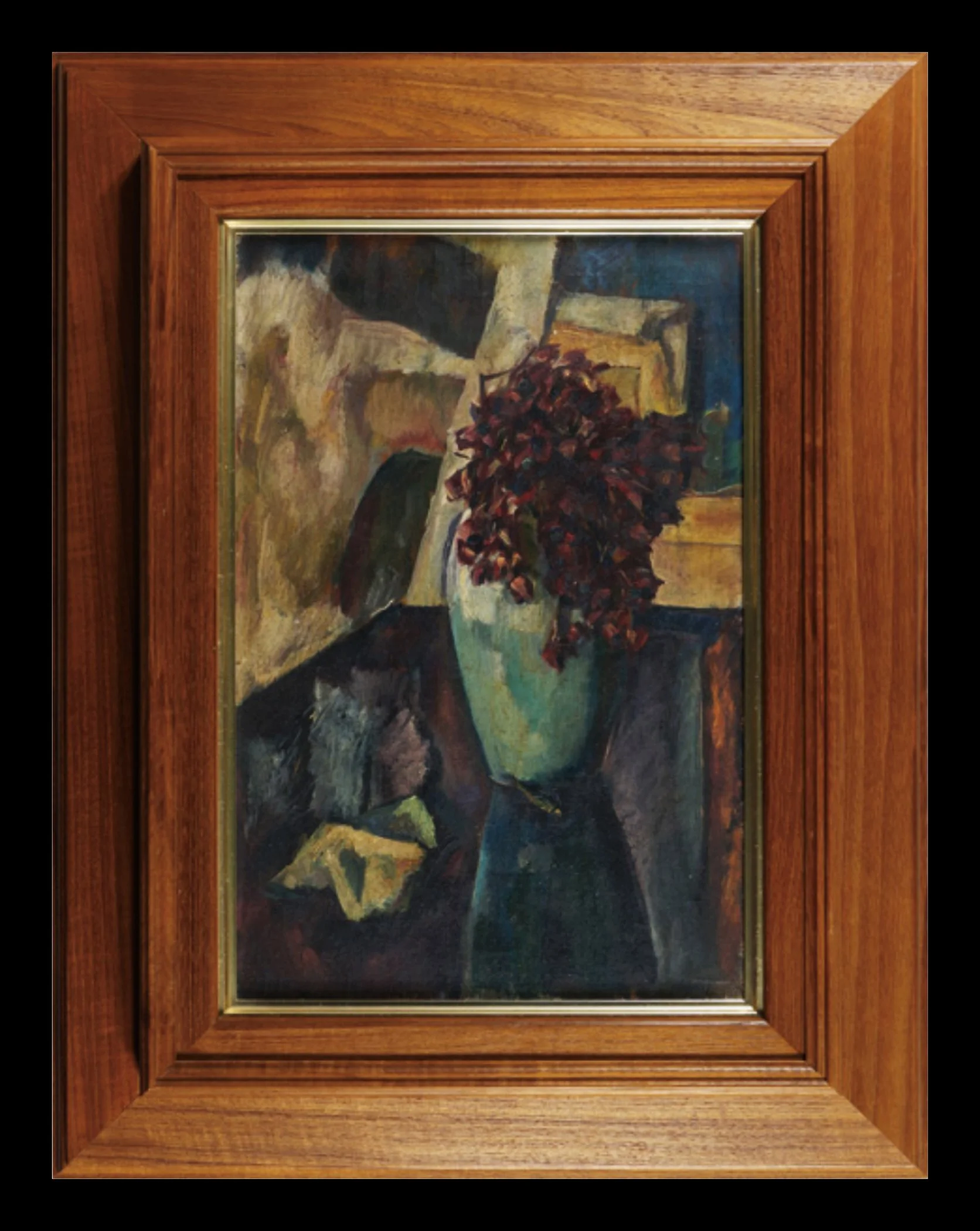<b>STILL LIFE WITH FLOWERS IN VASE</b> / Koshiro Onchi1919<b>SOLD</b></em>
Still Life with Flowers in Vase
Koshiro Onchi (1891–1955)
MEDIUM: Oil on canvas
DATE: 1919
DIMENSIONS: 16 12 × 10 ¾ inches (canvas size)
CONDITION: Excellent
SOLD
Contact us to purchase
Still Life with Flowers in Vase
Koshiro Onchi (1891–1955)
MEDIUM: Oil on canvas
DATE: 1919
DIMENSIONS: 16 12 × 10 ¾ inches (canvas size)
CONDITION: Excellent
SOLD
Contact us to purchase
Still Life with Flowers in Vase
Koshiro Onchi (1891–1955)
MEDIUM: Oil on canvas
DATE: 1919
DIMENSIONS: 16 12 × 10 ¾ inches (canvas size)
CONDITION: Excellent
SOLD
Contact us to purchase
Details
Onchi Kôshirô (1891-1955) was raised and educated in an aristocratic family, the son of a high-ranking official of the Imperial Court, himself a painter, calligrapher, and scholar of Chinese studies. Onchi graduated from a Japanese-German middle school in preparation for a career in medicine. He next took and failed the entrance exam for the prestigious Daiichi Kotogakko (First High School). Next, he attended the White Horse Society's school in Akasaka until entering the oil painting curriculum at the Tokyo School of Fine Arts in 1910. Always, restive, he again changed, this time to sculpture at the end of the first year. Not willing to abide the constant disagreements with his teachers, he finally dropped out only four months into his second year. He would become instead an innovative, independent, and charismatic artist, a central figure in twentieth-century Japanese printmaking.
Onchi was one of the founders of the Sôsaku Hanga (“Creative Print”) movement, and through his art, book design, and poetry, and his participation in various print organizations, he inspired several generations of artists. Perhaps more than anyone else, it was Onchi who identified the principle of self-carving and self-printing as essential to Sôsaku Hanga. He seems to have started making abstract prints in the first year of Taishō (1912-26), and continued to experiment for his entire career, drawing on traditional elements of Japanese color and decorative sense, and combining them with motifs from international modernism. His first published abstract prints were included in the epoch-making print journal Tsukuhae (“Moon Glow”) which ran for seven issues from 1914 until 1915. Notably, Onchi's “Lyric: Clear Hours” or “Bright time” from Tsukuhae V is considered the first purely abstract imagery published in Japan.
Connoisseur's Note
Onchi never entirely abandoned oil painting after ending his studies and taking up printmaking. Most surviving oils were made during the 1910-1920s, and most were finished in the last few years of that decade. Very few oils are known after 1930. Many were studies rather than painstakingly finished views. In the work offered here, Onchi uses thick impasto applications of colors. There is some wet-on-wet technique, as well as reliance on energetic parallel strokes in building up his forms. Many of these shapes have “feathery” contours, diminishing much of their linear emphasis. Only the vase with flowers seems anchored, complemented by a strong dark shadow on the table. Yet it, too, is only partly delineated by outlining, with its right side blending into the background. The arrangement of these forms in Onchi’s studio is loose and not strictly true to single vanishing-point perspective. The canvas within-a-canvas at the top left shows a nude male torso from the back, which leans over the table in a destabilizing manner. Overall, The palette is dark—a familiar characteristic of Onchi’s oil work. This workshop view is a satisfyingly expressive and accomplished rendering of forms and colors, making this a successful representational-abstract composition in the oil-paint medium, and one of Onchi’s best oils before 1920.
Written by John Fiorillo. See: https://www.viewingjapaneseprints.net/texts/sosaku_hanga/onchi.html





